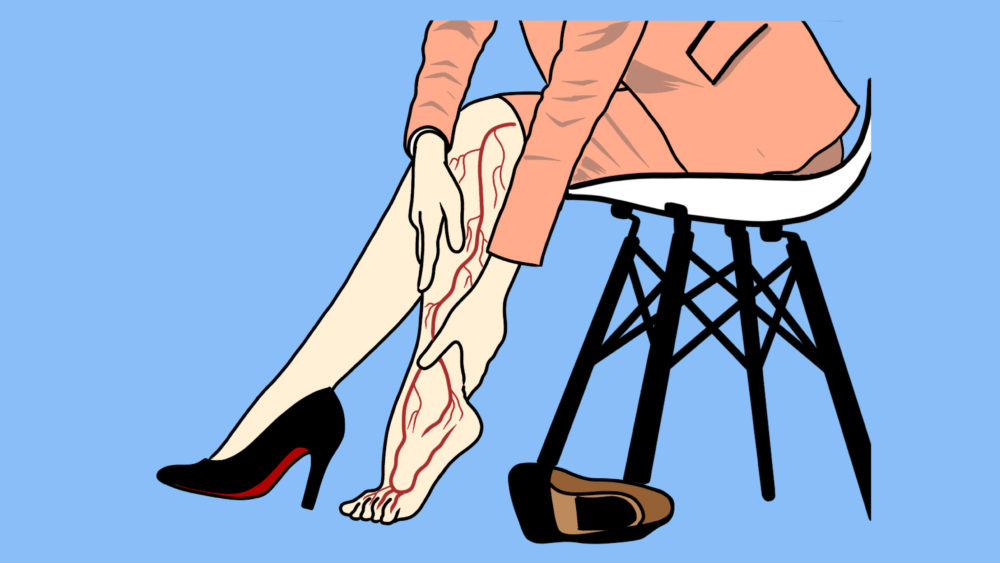When a blood clot (also called a “thrombus”) forms in one or more of the deep veins in your body, usually in the legs, an extremely dangerous condition called deep vein thrombosis (DVT) can develop. DVT can cause leg pain or swelling, but it can also occur without any symptoms—meaning you might not even know that you have it until it has progressed into something worse.
Deep vein thrombosis can be very serious because blood clots in the veins can break loose, travel through your bloodstream, and lodge in the lungs—blocking blood flow. This sudden condition is called a pulmonary embolism, and it can be life-threatening.
Knowing the risk factors that make deep vein thrombosis more likely in women will allow you to make lifestyle choices to prevent it. Of course, some of the things that put you at a higher likelihood of developing DVT are obvious, but completely out of your control. These include risk factors like aging (passing the age of 60), family history (about a third of people with DVT inherited a blood clot disorder), and personal history (a previous blood clot increases your risk of more in the future). But some risk factors are actually quite surprising.
The following are some of the most shocking risk factors that make you more likely to develop deep vein thrombosis—that all women should know.
Pregnancy
Your risk of developing a blood clot goes up during pregnancy and stays there for six weeks after delivery of the child. That’s because the burdens of pregnancy increase pressure on the veins in your pelvis and legs.
Injury or surgery
Injuries and surgeries can trigger a clotting response (which is part of the normal healing process), but they can go too far and cause blood clots.
Hormone-based medication
Women who take hormonal medications heavy in estrogen, such as birth control pills, drugs to alleviate menopause symptoms and certain cancer treatments, all have an increased risk of developing DVT.
Being a smoker
Need another reason to quit? Chemicals found in the smoke from tobacco can cause serious damage to your blood cells and make you more susceptible to clotting.
Lack of physical activity, immobility
Sitting or laying down for extended periods of time, like long plane flights or car trips, increases your risk of a blood clot. When the legs remain still for hours, calf muscles do not contract and help the blood circulate, which allows clots to form.
Obesity
Studies have shown that people suffering from obesity with a body mass index (BMI) of 30 or higher are two to three times more likely than their healthier counterparts to develop a dangerous blood clot.
Ethnicity
Caucasians and African American are at higher risk of DVT than people of other races.
Active cancer
According to a few different studies, having cancer and receiving cancer treatments doubles or triples clot risk. Some forms of cancer and their treatments increase substances in your blood that make blood clot.
Other health problems
Some infections, kidney disease, diabetes, long bone fractures, and neurological diseases that affect movement in the legs can increase your risk of DVT.
Hospitalization
People who are hospitalized and have to stay still for prolonged periods of time may have 10 times the risk of developing DVT.
Living in a nursing home
Residents in nursing homes reportedly have more than twice the risk of DVT. This likely has a lot to do with the fact that the people who enter these homes tend to already have limited motor functions.
Sources:
https://www.everydayhealth.com/news/what-women-need-to-know-about-deep-vein-thrombosis-risks/
https://www.mayoclinic.org/diseases-conditions/deep-vein-thrombosis/symptoms-causes/syc-20352557



